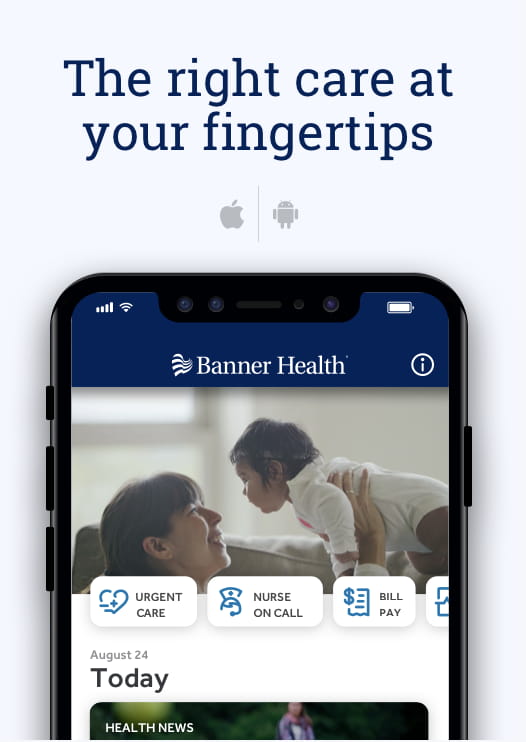When you’re cold, your body tries to stay warm. That’s why you shiver — contracting your muscles can create heat. But some of your body’s responses to cold can make you more likely to have problems with your heart.
And winter activities like shoveling snow or outdoor exercise can stress your heart. Here’s why winter weather can increase your risk of heart attacks and strokes as well as other cardiovascular diseases.
How cold impacts your body
“There are a few different ways cold weather increases heart problems,” said Maurice Lyons, DO, a cardiothoracic surgeon with Banner Health.
When you’re cold, the blood vessels in your body that are close to your skin tighten. This process is called vasoconstriction. It lowers the amount of heat that escapes through your skin and helps keep your body's core warm.
There’s less blood flow in your cardiovascular system during vasoconstriction. “Your heart is forced to work harder,” said Dr. Lyons. Your heart rate and blood pressure go up, and those increases can stress your heart. People who already have high blood pressure may find it gets worse.
Vasoconstriction can also mean your heart doesn’t get as much oxygen from your blood. So you might be at higher risk for chest pain and other heart problems. If there’s not enough blood supply to meet demand, you could have a heart attack.
During cold weather, you may not be as active as usual. Less physical activity can increase your risk of blood clots. You’re also prone to dehydration in the winter, since you may not realize you’re losing fluids. Dehydration can lead to blood clots. And blood clots put you at higher risk of heart attack and stroke.
Heart problems that can be worse in winter
A few heart conditions are linked with cold winter weather:
- Chest pain (angina): You may notice chest pain when your heart doesn’t get enough oxygen. Cold weather can reduce the blood flow to your heart.
- Irregular heartbeat (arrhythmia): In cold weather, your body can release stress hormones like adrenaline. These hormones can affect your heart’s rhythm.
- Heart attack: Blood flow changes, high blood pressure and extra strain on your heart can lead to a heart attack.
Physical exertion, like shoveling snow, can strain your heart even more in winter. That’s because your body has to pump more blood to get oxygen to your heart.
Who’s at risk?
The cold weather can affect the heart differently. Some people cope with the cold weather well, while others are at greater risk for heart issues in winter. These factors could increase your risk:
- Pre-existing heart conditions: Coronary artery disease, heart failure, arrhythmias and angina increase your risk. That’s because these conditions can reduce your blood flow and function.
- High blood pressure: Cold temperatures can make high blood pressure worse.
- Age: People over 65 are more likely to have cold-related heart issues.
- Physical inactivity: During colder months, you may be less active, which can lead to deconditioning and make you less able to cope with the strain of cold weather.
- Smoking: Smoking damages blood vessels and increases the risk of blood clots.
- Obesity: Excess body weight can strain your heart, and people with obesity are more likely to have heart disease. Plus, insulation from body fat can make people less sensitive to cold, so they may be less likely to recognize cold-related risks.
- Diabetes: Diabetes can damage blood vessels and increase the risk of atherosclerosis (narrowing of the arteries).
How to protect your heart in cold weather
These tips can help you stay healthy when you’re outdoors in the cold:
- Dress in layers: Ideally, you want a moisture-wicking base layer that keeps sweat away from your skin, an insulating layer that keeps you warm and a waterproof and windproof outer layer.
- Keep your hands, feet and head warm: Wear warm gloves, thick socks and a hat to keep your hands, feet and head warm. Covering your face with a scarf or mask can help reduce the risk of cold-related chest pain.
- Stay dry: Use waterproof clothing or umbrellas.
- Wear appropriate footwear: Choose insulated, waterproof boots.
- Stay hydrated: Drink water regularly.
- Limit your time outdoors when it’s extremely cold: Take regular breaks to come inside and warm up when temperatures drop. Consider exercising indoors instead of outside.
- Be mindful of shoveling snow: Pace yourself, take plenty of breaks and lift correctly. “Shoveling involves moving hundreds of pounds of snow,” said Dr. Lyons. “People don’t understand how much work is involved in snow removal.”
- Avoid overexertion: Listen to your body and don't push too hard. Even walking through heavy, wet snow can be tough. Overexertion can cause chest pain or a heart attack.
- Pay attention to forecasts: Plan for extreme cold and wind chill.
Watch for these warning signs
If you’re having heart attack symptoms, you may notice:
- Chest pain, pressure, tightness or discomfort (it may feel like a squeezing sensation in your chest)
- Shortness of breath or having a hard time catching your breath
- Dizziness or lightheadedness
- Nausea or vomiting
- Extreme fatigue
- Pain that radiates to your arms, neck, jaw or back
- Irregular heartbeat
- More subtle symptoms
Be sure to seek immediate medical attention if you have any of these warning signs. Getting care right away can prevent a heart attack or reduce damage, help you recover more quickly and keep complications to a minimum.
“The most important thing is to listen to your body,” said Dr. Lyons. “Getting evaluated properly as soon as symptoms start can lead to life-saving treatments.”
Keep your heart healthy year-round
A healthy heart can better withstand the demands of cold weather and winter activities. Here are some steps that support heart health.
- Get regular exercise: Aim for at least 150 minutes of physical activity per week. Exercise strengthens the heart, improves circulation and helps manage weight.
- Choose a balanced diet: Include plenty of fruits, vegetables, whole grains, lean proteins and healthy fats. Limit salt, processed foods, sugary drinks and red meat.
- Maintain a healthy weight: Balance nutrition and being physically active for weight management.
- Know your risk factors: See how your health history and lifestyle factors influence your heart health.
- Manage stress: High-stress levels can harm your heart health. Try deep breathing, meditation or yoga.
- Limit alcohol intake: If you consume alcohol, limit it to one drink per day for women and two drinks per day for men.
- Quit smoking: Smoking is a major risk factor for heart disease.
- Get quality sleep: Aim for seven to nine hours each night. Poor sleep can contribute to heart problems.
- See your health care provider regularly: That way you may uncover any heart problems like high blood pressure or high cholesterol early and put a treatment plan in place.
- Take your medication as prescribed.
The bottom line
Cold winter weather can increase your risk of heart attack, stroke and other cardiovascular conditions. Staying warm, taking plenty of breaks and listening to your body can help you stay safe and healthy.
Your primary care provider or an expert from Banner Health can help evaluate your heart health risk factors so you can take steps to keep your heart as strong as possible.


